
Intro to design thinking
Design thinking, simply put, is a design-led approach to human-centered innovation. It can be used in the creation of new products, services, brand and customer experiences—even business strategies and systems. And it's something we're starting to leverage inside Mastercard. This topic will give you an overview of the basic principles and why it's important.
Starting with human needs
Innovation in the context of design is not just about technology. It's about creating things that are relevant, useful, and easy to use as well as aesthetically pleasing. It's about uncovering ideas for value-driven offerings and solutions that are informed by human observation and insight, not just technical capabilities.
In an increasingly cluttered marketplace, creating things people want that are also well designed has become a source of competitive differentiation. A survey by Kelton Research for Autodesk found that seven out of 10 Americans attributed design to the reason why they had to have a product. Design is the reason why people love Tesla cars, which bring together innovative technology (function) and sophisticated aesthetics (form) into a car like no other. Uber became a multi-billion dollar company not because of their business model, but because the end-to-end service experience is incredibly simple and easy to use.
"From little buck slips to big buildings, the design challenges of a large organization are never ending."
At its core, design thinking is about using real observations of people in a test and learn approach to develop concepts and solve complex problems. In fact, design thinking has come of age, in part, to a "response of the increasing complexity of modern technology and modern business," according to John Kolko, founder and director of the Austin Center for Design. In a world where nearly every business is thinking about how to become more digital, new opportunities (and challenges) emerge that require new ways of working. Industrial giants like IBM and GE now consider software development essential to their business. To help them manage this new complexity, they have recognized design and design thinking as a business-critical function for simplifying and humanizing everything from the delivery of a complex service to a digital user experience.
The key to approaching design thinking is to deeply integrate perspectives that come from multidisciplinary collaboration. We start with human needs, but are constantly looking through the lens of business and technology—not to limit creative ideation, but to ensure a more complete and diverse point of view.
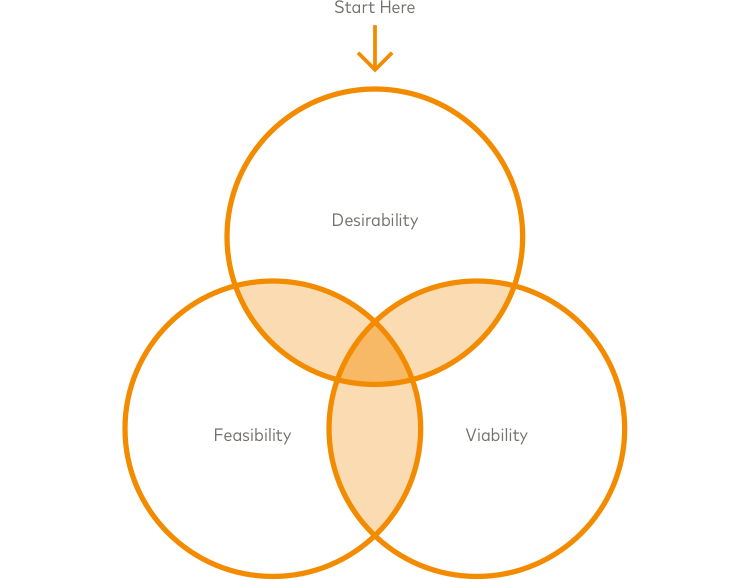
Human-centric approaches to design have been around since the start of the industrial revolution, but the term "design thinking" was officially coined in the 1990s by David Kelley and Tim Brown of IDEO, the design and consulting firm that first gained attention with its human-centered approach to the design of the Palm V PDA. Together, they encapsulated methods and ideas that had been used by designers for many years into a single unified concept.
A great example of starting with the desirability of a product dates back to 1934 when Raymond Loewy, a design consultant for Sears and Roebuck, merged aesthetics, materials, and manufacturing to transform the loud and ugly electric refrigerator of the 1920s into a modern kitchen appliance. The technology itself didn't change dramatically, but Loewy saw the value in appealing to human emotions and senses. The intentionally futuristic casing provided a sense of newness and appeal that made it a must-have item in American households. In one year, sales jumped from 65,000 to 250,000 units, all because of the new design.
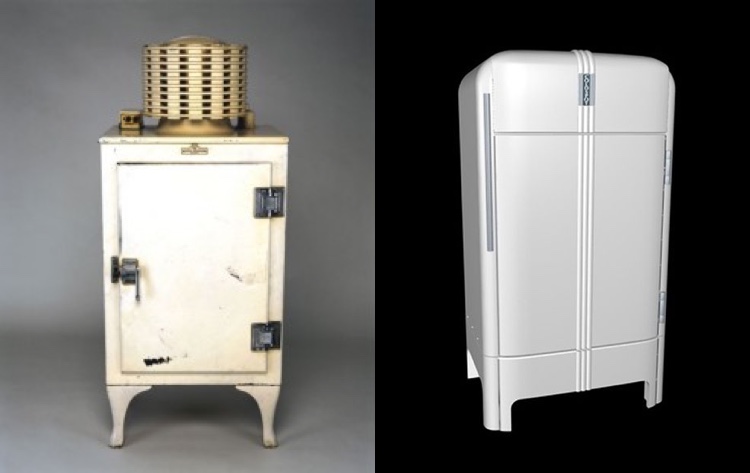
1927 Sears & Roebuck Refrigerator versus the 1934 Sears & Roebuck, Coldspot 6 Refrigerator
We're now in a place where the value of design and design thinking has been fully embraced by business. Seeking to emulate the stellar success of design-led businesses like Apple, global companies are pouring investment into design. IBM, for one, announced a $100 million investment in its design capabilities in 2014 with the goal of hiring 1,000 designers by 2018. The same year, Capital One purchased a well-regarded design consultancy to help them focus on improving the consumer experience. And if HBR is your go-to for the pulse of business conversation, you'll find a Sept 2015 issue devoted to the evolution of design thinking.
If there's any question about the bottom line, a 2013 study published by the Design Management Institute found that design-driven companies outperform S&P by 228% over ten years.
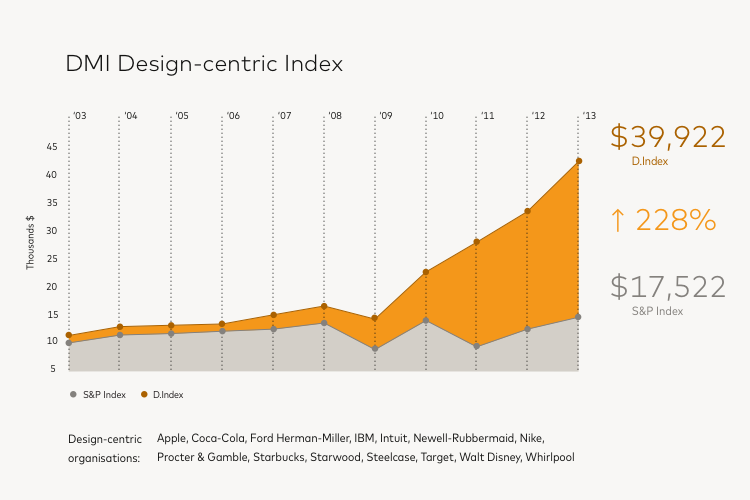
Good design is definitely good business. The good news is that you don't have to be a designer to engage in the design thinking.
So what does design thinking look like?
In many ways, this set of refrigerators is a visual metaphor for how design and design thinking can help transform Mastercard. How do we move from engineering-driven development of products and services to a customer-centric, design-driven approach that will drive business growth? There are fantastic new concepts coming out of launch pads sponsored by the Mastercard Labs team. We've also been using a design thinking approach to new product concept development with the credit and pre-paid teams in Core Products.
To help you get started, here's an overview of what design thinking looks like:
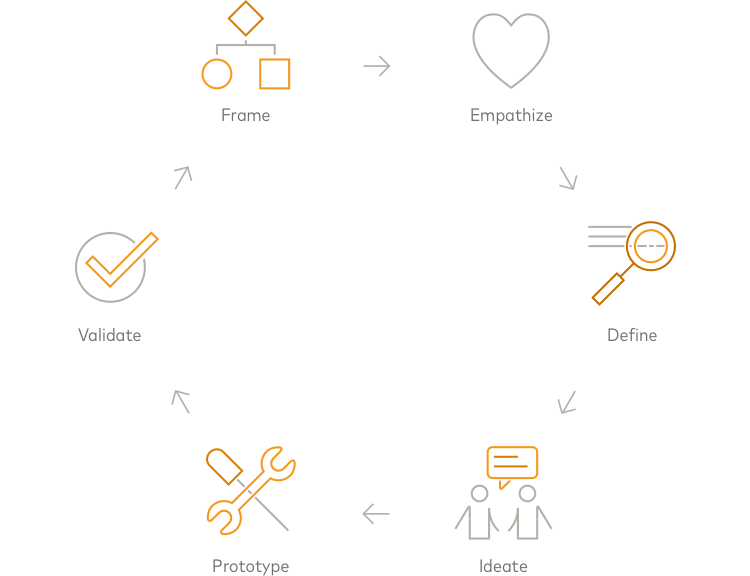
Frame
Define the business need or problem you're trying to solve for a clearly defined group of people.
Value-driven experiences need to be firmly rooted in a core business problem or set of objectives focused on a clear audience. Framing also includes having a clear understanding of the competitive landscape. A team working on pre-paid related products and solutions, for example, set out to define an alternative banking product for millennials that could help satisfy their financial needs in ways that current banking products were not addressing. It was a great starting point for concept development.
Empathize
Find ways to understand or observe the behaviors and unmet needs related to the problem.
Once we've framed the problem, we need to gather and prioritize observations and insights (e.g., jobs, pains and unmet needs) for the target consumer. This can be done through a combination of methods and sources, including ethnographic research, interviews and customer journey mapping.
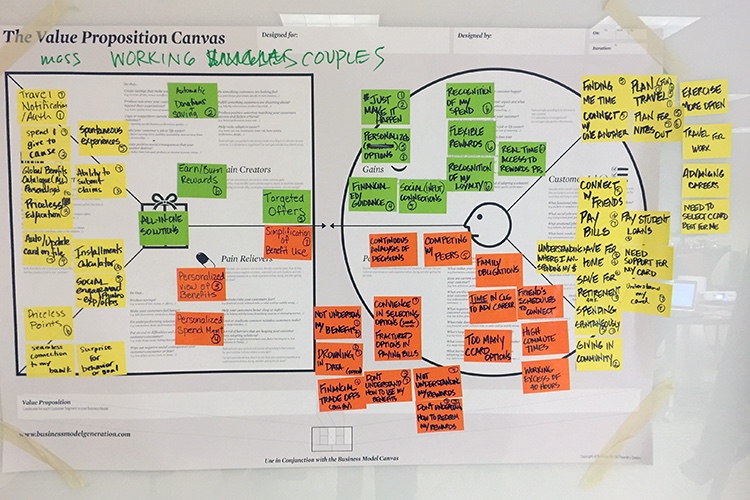
Laying out consumer needs in a value proposition canvas.
Define
Identify territories or opportunities for creating value based on needs.
Looking at the business problem against the market landscape and consumer needs help recognize the open strategic spaces that can drive innovation and deliver value in critical territories. For one project, we generated five different concept directions based on consumer insights. We've also been using the value proposition canvas to help locate areas of opportunity for the consumer, based on identified needs.
Ideate
Brainstorm ideas and solutions for addressing areas of opportunity.
The focus of concept ideation is to allow for unhindered exploration of ideas that address the defined areas of opportunity. This is usually done in context of a collaborative sketching sessions, sometimes with actual consumers in the room. Visualizing ideas is the most effective way to explore how a product or service can deliver value. It gets everyone out of their day-to-day roles and helps fuel creativity.

Prototype
Create tangible demonstrations of how the ideas come to life.
A new or evolutionary experience concept cannot be fully tested until it's made tangible. A range of prototyping techniques and levels of fidelity help us understand the level of desirability, viability, and feasibility that will reduce risk in further investment. Prototypes can range from a paper sketch or clickable flow to a coded interface. In the case of services, role playing exercises can also be considered prototypes.


Lo-res approaches to prototyping can range from sketches to a clickable file.
Validate
Get feedback and input from the target users. Understand the implications for technology.
Once we have an experience prototype, we may want to get early feedback from users, test drive a solution for our customers or socialize the idea internally. In some of the work happening with Mastercard, we've been putting prototypes in front of consumers during the prototyping process. We're also getting early usability feedback on prototypes before anyone has made a final go/no-go decision on moving forward.
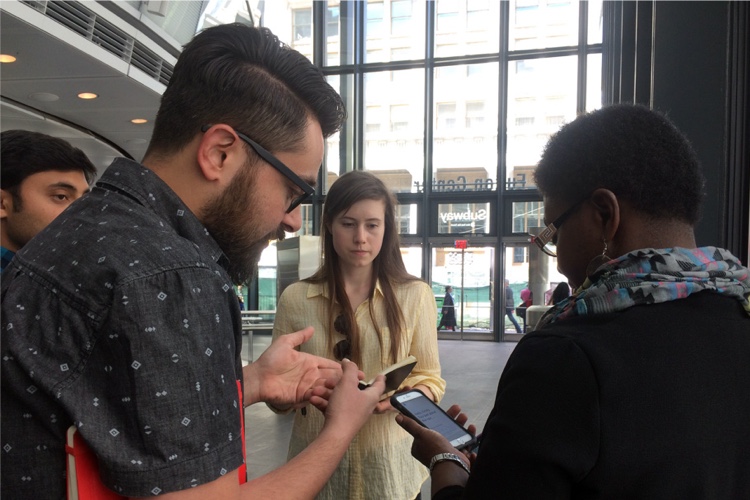
Lo-res approaches to prototyping can range from sketches to a clickable file.
Are you a design thinker?
Compare the way you think with Tim Brown's design thinker's personality profile:
Empathy
They can imagine the world from multiple perspectives – those of colleagues, clients, end users, and customers (current and prospective). By taking a "people first" approach, design thinkers can imagine solutions that are inherently desirable and meet explicit or latent needs. Great design thinkers observe the world in minute detail. They notice things that others do not and use their insights to inspire innovation.
Integrative thinking
They not only rely on analytical processes (those that produce either/or choices) but also exhibit the ability to see all of the salient – and sometimes contradictory – aspects of a confounding problem and create novel solutions that go beyond and dramatically improve on existing alternatives. (See Roger Martin's The Opposable Mind: How Successful Leaders Win Through Integrative Thinking.)
Optimism
They assume that no matter how challenging the constraints of a given problem, at least one potential solution is better than the existing alternatives.
Experimentalism
Significant innovations don't come from incremental tweaks. Design thinkers pose questions and explore constraints in creative ways that proceed in entirely new directions.
Collaboration
The increasing complexity of products, services, and experiences has replaced the myth of the lone creative genius with the reality of the enthusiastic interdisciplinary collaborator. The best design thinkers don't simply work alongside other disciplines; many of them have significant experience in more than one.